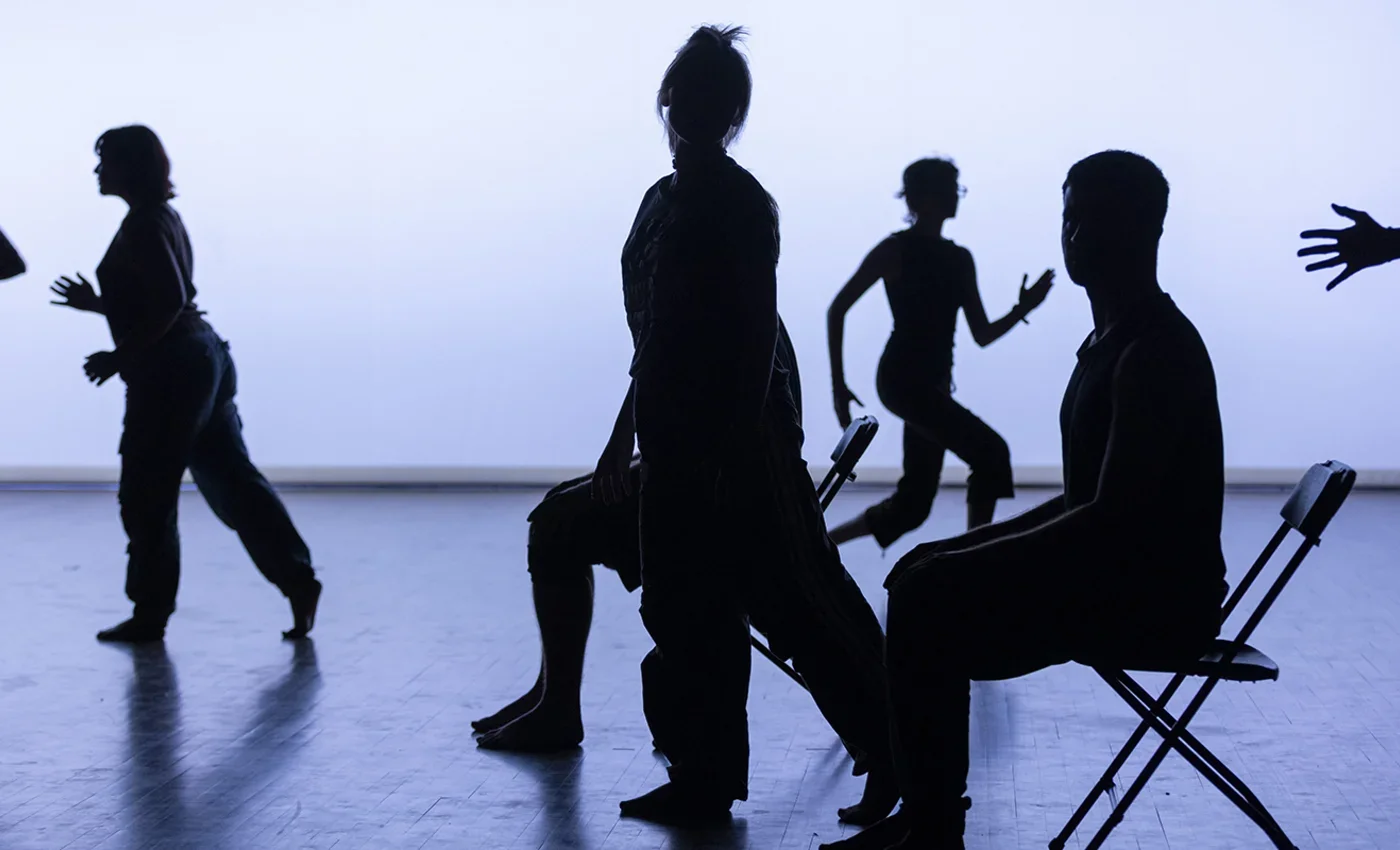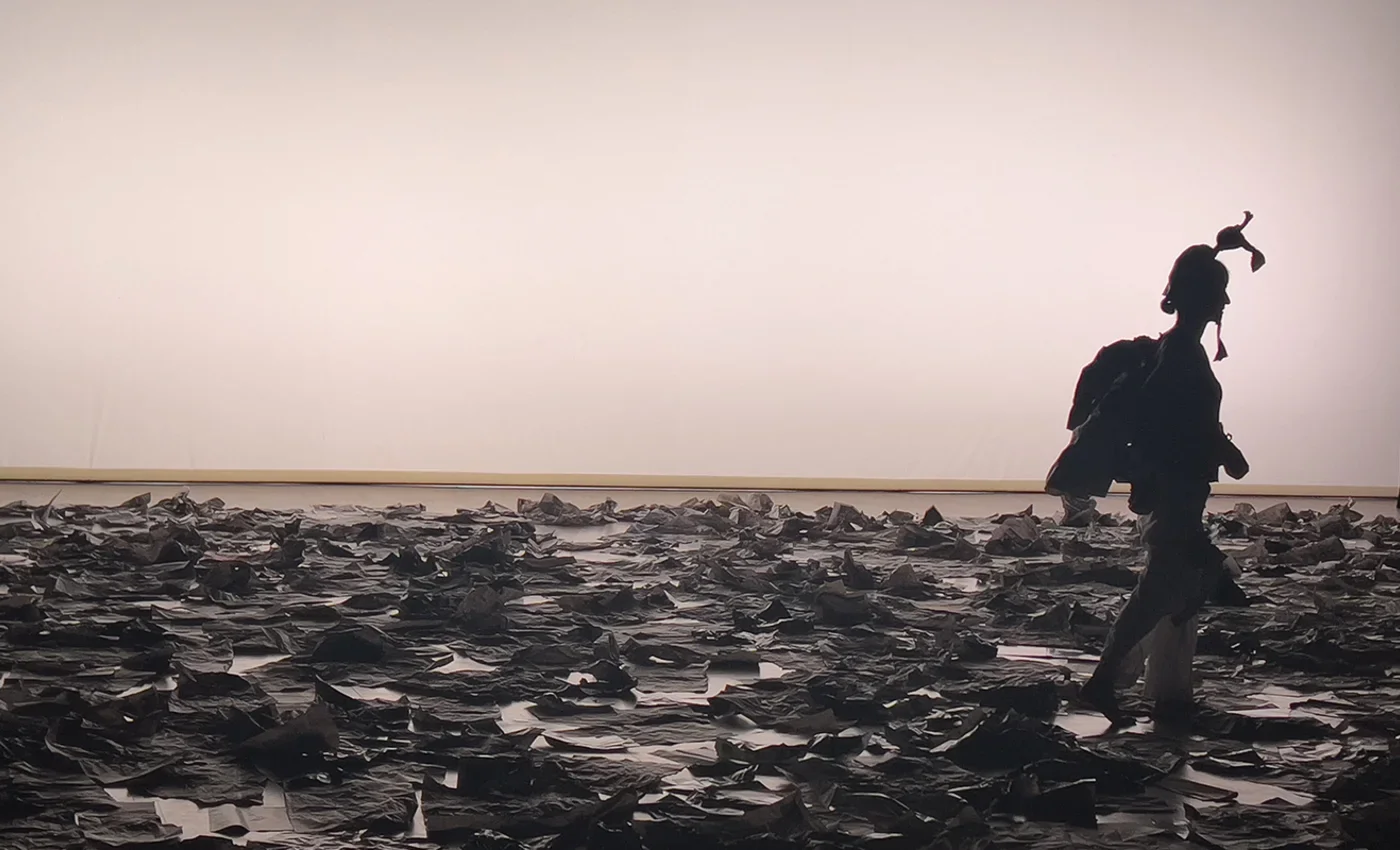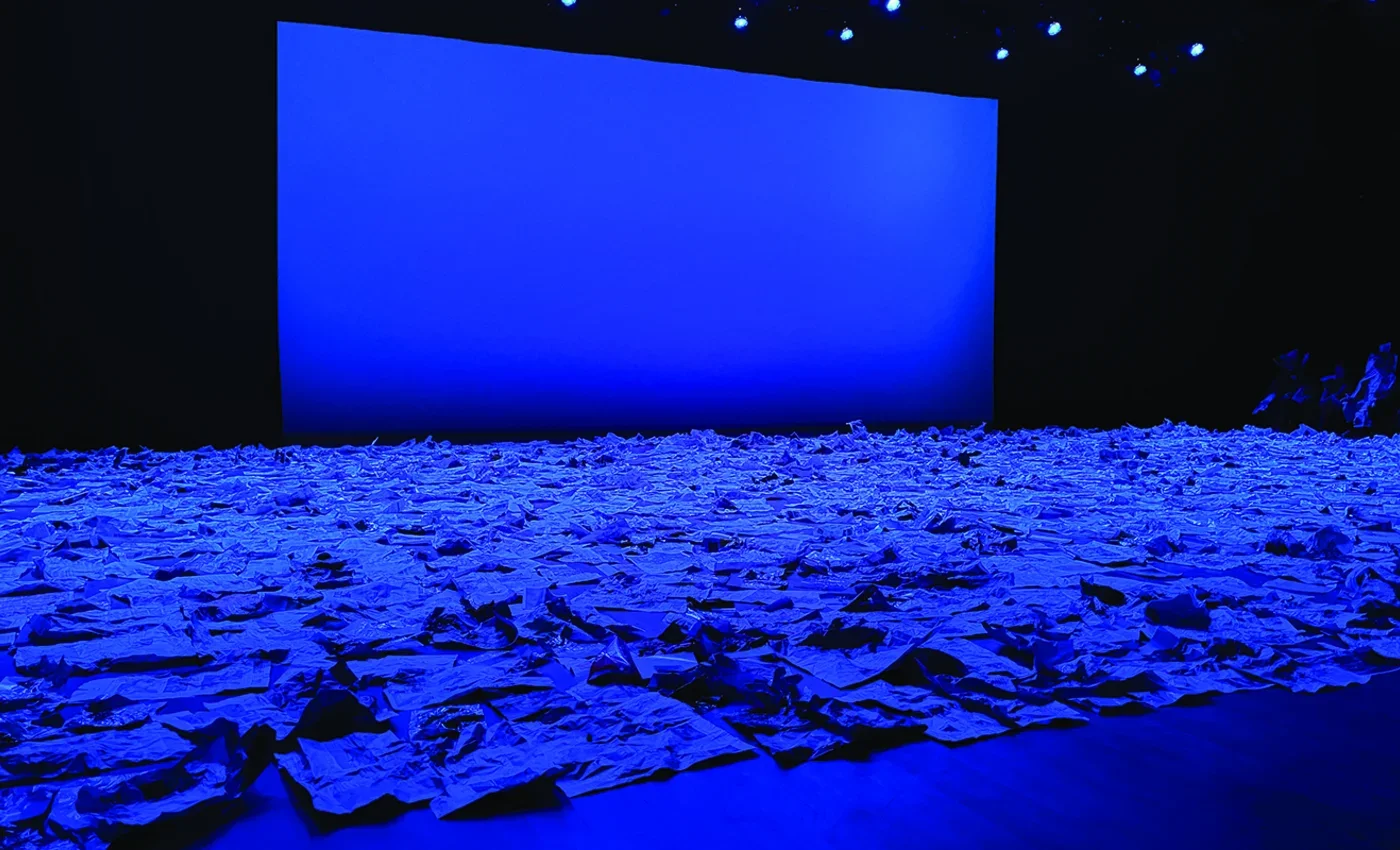A Full-Circle Moment

Robert Wilson Visits Bennington
The audience streamed into the vast Martha Hill Dance Theater in the Visual and Performing Arts Center on Bennington College’s campus on the evening of Friday, September 20. Students, faculty, staff, and others were there to witness a “Lecture/Performance” from widely recognized theater artist Robert Wilson.
Dana Reitz, choreographer, performer, visual artist, and faculty member in dance, and Jennifer Rohn, actor, director, and faculty member in drama, organized and hosted the event and workshop sessions during the days following.
Reitz delivered a gracious welcome. Rohn delivered a vivid introduction filled with seldom-heard accolades of an illustrious career. Wilson is the winner of the Golden Lion at the Venice Biennale and a member of the American Academy of Arts and Letters. In France, he is a Commander of the Order of Arts and Letters and in Germany, the recipient of the Officer’s Cross of the Order of Merit.
Both Rohn and Reitz had worked with Wilson on productions early in their careers. Reitz was a member of the original cast of Einstein on the Beach; Rohn performed in Hamletmachine, the opera Salome, the CIVIL WarS, and Quartet.
There is a poetry in the full-circle moment that is happening here tonight,” Rohn said in her introduction. “Both Dana and I have performed in Bob’s work, and it deeply impacted our work as young artists. We are overjoyed that our students have this opportunity to learn from him.”
Robert Wilson took his place behind the podium. Long after the audience would have expected him to speak, he was silent. For three minutes, the audience heard nothing but the pop of a cell phone notification, the scratch of a pen on paper, a noisy car passing by outside. Later in the lecture, Wilson talked about the power and anticipation of a bow string being drawn back, and it seemed as if, in those first moments, the audience itself was the string being held in suspense.
“Stillness. Silence. Time. Robert Wilson stops the high speed,” said Reitz. “He provides the opportunity to go more deeply and take the time to learn. He gives his audiences and performers the opportunity to see. It was radical in the sixties and seventies. And it still is. It means that you have time, emotional time and physical time, to consider and reconsider everything.”
The whole talk was peppered with novel ideas about time, light, space, and architecture. Michael Giannitti, lighting designer and faculty member in drama worked with Wilson’s assistants to ensure that all of the technical requirements for the lecture/performance and workshops were met. He has been a fan and admirer of Wilson’s work for many years. He saw Wilson’s 1984 performance of Einstein on the Beach at the Brooklyn Academy of Music and a number of Wilson’s productions subsequently.
“I have found them very inspiring,” Giannitti said. “It was incredibly exciting to have someone of his stature on campus, both to speak to the community about his work and also to do the workshop with our students.”
Wilson addressed the role of light, in particular. Unlike many theater makers, who wait for the last two weeks before the show opens to consider how to light it, Wilson starts with light. Giannitti was surprised by that. “I had known all along that light was a major part of how Wilson conceives of any production he does, but I hadn’t read or heard him articulate previously that for much of his work light is the starting point.”
Throughout the lecture, Wilson drew diagrams of his plays. He used the diagrams to “see the whole thing at once” but also as a way to illustrate their symmetry and form.
People say that my work is avant garde. It’s really quite classical,” Wilson said. “The classical needs to be rediscovered. Men have to learn what they were born knowing.”
Wilson’s goal throughout his career has been to inspire the audience to ask, “What is it?” and to begin to create relationships between what they were experiencing throughout his works and their own meaning. “The reason to work,” he continued, “is to ask ‘what is it?’ Not to say what it is.”
Of his work, The Life and Times of Sigmund Freud, Wilson said, “Most people said that the work had nothing to do with Freud. And they were right. But I was thinking of Freud the whole time.”
Wilson gave two four-hour workshop sessions on the following Saturday and Sunday. José Rubén Ruiz Garrido ’26 appreciated experiencing Mr. Wilson’s directing process first hand as a performer.
“He invited us to be part of two pieces he created in the moment, allowing us to feel what it is like to be directed by him and to embody his vision,” said Garrido. “He approached each piece with detail and care, paying close attention to the use of light and corporeality. Even though these two pieces were not going to be repeated again, he poured his time and professionalism [into them] from beginning to end, involving us as collaborators.” Garrido continued, “As a drama student with a focus on acting and scene design, it was a privilege to get insight on his approach as a theater maker by seeing it happen in person.”
Surabhee M. Arjunwadkar ’25 studies music and dance. She appreciated the contrasts in Wilson’s methods and his comprehensive approach.
“The way he makes [theater] is so impulse driven. But it’s also very calculated and very structured,” she said. “He is thinking of all the things that come with a performance: the bodies in space, the set, the stage, the lights, the costumes, and the sound. It was just incredible being in the process and him directing us because we, the performers, tend to think that we are the biggest part of the performance itself, but we are just one part of it.”
Attending the lecture and the workshop will affect how Arjunwadkar approaches her senior work, which she is working on now.
There is something very uninhibited about [Wilson]. It’s not that he’s an innovator and others are not, but he is fearless in his innovation. He believes in his ideas.”
Reitz and Rohn both feel fortunate to have been able to bring Robert Wilson to Bennington. His presence, his rich and innovative theatrical history, helped expand awareness and context for the students’ own work.
“It was a tremendous joy to share the example of someone who is such an innovator, who didn’t have artistic approval right away, who stuck to his vision… and who is continuing to evolve in his eighties,” said Rohn.
“The profound wisdom that he had resonated with our students, who are at the very beginning of their artistic journeys. I think they learned that there are things that are completely timeless about focus and simplicity and actually doing more with less. I hope that students take the time to honor and respect the innovators that came before them and then get started themselves.”
The lecture and workshop were funded by the Peter Drucker Fund for Innovation and Excellence.
"Hosting Robert Wilson at Bennington has been an extraordinary honor,” said Laura R. Walker, President of Bennington College. “By sharing his vision and innovative approach with the Bennington community, he challenged our students to experience the fundamentals of their craft, from the simple act of standing on stage to the role of time and physicality in performance. Robert opened our eyes to the mystery and dreamlike qualities of theater, forever changing how we perceive light and the body and patterns in a piece of theater.”
She continued, “We are deeply grateful to the Peter Drucker Fund for Innovation and Excellence whose generous philanthropy made this transformative experience possible, and to Robert for sharing his unparalleled artistic insight with our community."





